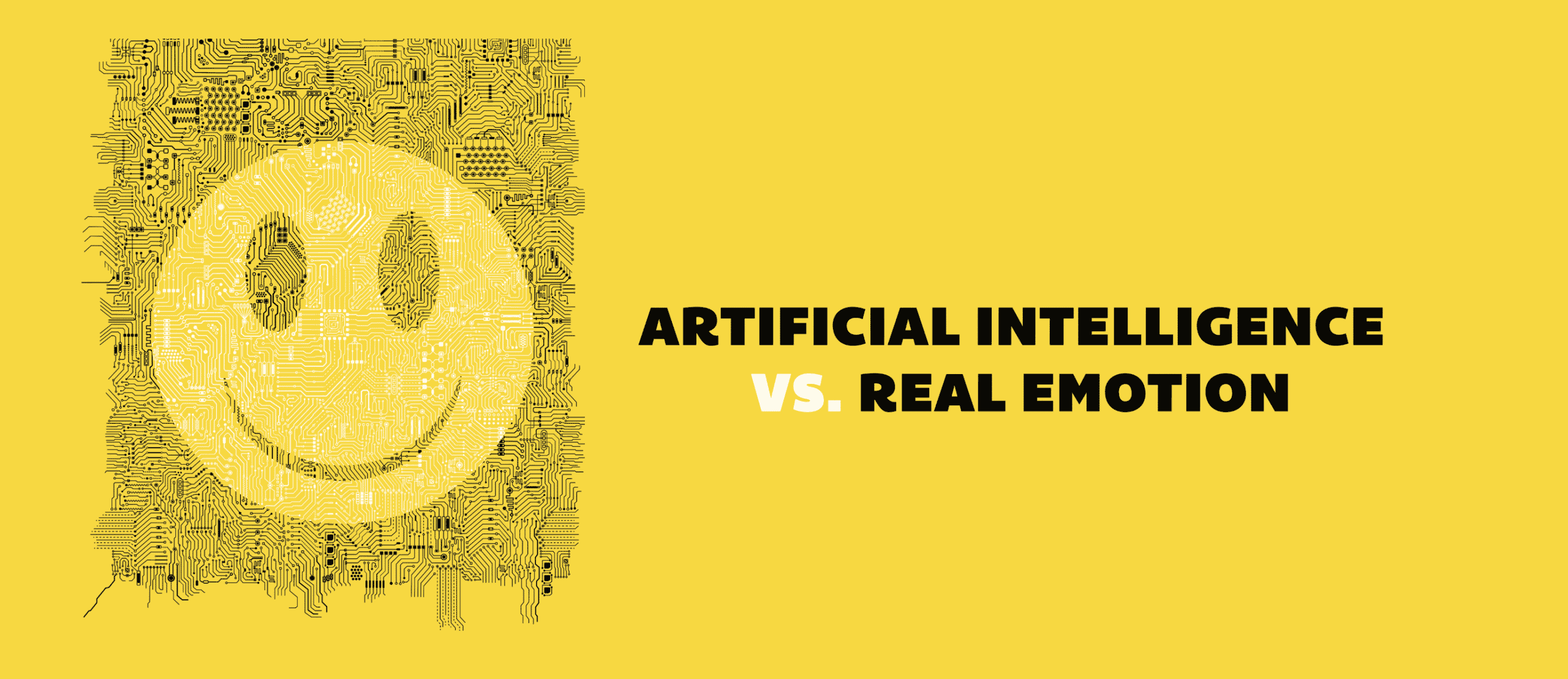Artificial Intelligence vs. Real Emotion

Anyone can be creative. Some have more natural ability than others, but everyone has creative power within.
But what about a computer? Can a computer be creative? Can AI produce more compelling and provocative ideas than a human?
Let’s Start by Defining Creativity
Creativity is “just making something,” according to Rainmaker Digital CCO Sonia Simone. “It might be something crummy or awkward or not ready for prime time. If you make something, you are creative.”
That seems too easy for people that are paid to be creative, so let’s keep defining.
AI can be your Creative Assistant.
David Meerman Scott, a marketing strategist and author, said creativity is “seeing patterns that others don’t and effectively communicating them.”
Based on his definition, computers and AI can be wildly creative and incredibly helpful to humans.
Adobe Sensei exemplifies humans and robots already creating nicely together. Sensei is AI technology built into Adobe’s creative design tools, such as Photoshop and InDesign.
One of Sensei’s superpowers is helping designers find just the right photo. Anyone that’s searched a stock photo library can tell you what a time-suck it is to scroll through literally thousands of photos in search of just the right one.
Here’s a bit of what Sensei’s AI can do:
• Narrow the search based on artistic features such as depth of field, predominance of a certain color and more.
• Search photos that haven’t been tagged with keywords because Sensei “knows” what certain items look like.
• Select the “best” photos within a search. “Best,” of course, is open to interpretation. But many seem to agree with Sensei’s taste. And if you want Sensei to be a little more (or a little less) critical, you can fine tune the filter with the slide of a button.
Sensei is a good example where AI isn’t just recognizing patterns to make things easier, it’s using “creative judgement.” An exciting step, for sure.
But in the end, even Adobe says Sensei “amplifies” human creativity. This is different from replicating human creativity, let alone replacing it. It merely frees-up time for creative people to be creative — to focus their energies on tasks that make a real difference.
Can AI Win an Oscar …
Another definition of creativity, based on the concept that there are no truly original ideas in the world because everything is influenced by something, Lisa Barone, chief marketing officer at Overit, said creativity is simply “copying smarter.”
Under this definition, IBM’s Watson, an AI platform invented by the company, has shown creativity by producing a trailer for the horror movie, “Morgan.”
Humans entered film footage into Watson, fed Watson other horror trailers as examples, and out popped a trailer for “Morgan.” It’s a bit disjointed, but it definitely has the vibe and cadence of a thriller.
The trailer proved AI can create something new by mimicking what exists.
But a human had to write the movie. And a human director had to direct the human actors, that performed in sets imagined by human designers.
The point: Because AI is copying what’s already been done, its output can fall into a pre-set genre or style. It may not feel original (because it’s not.)
… Or Write a Hit Single?
AI has also written original music. Shimon — a four-armed marimba playing robot — studied large datasets from well-known musicians and then produced and performed its own compositions. Taste is subjective, but I wouldn’t put Shimon’s tracks on my Spotify playlists. It lacks soul and inspiration (let alone a decent melody.)
Songs created by humans, on the other hand, can make you think and feel, love and hate. Some are even written with far more efficiency than a computer.
The Rolling Stones’ “(I can’t get no) Satisfaction” was written in about 40 minutes. Led Zeppelin’s “Rock and Roll” took about 30 minutes. And Queen/Bowie’s “Under Pressure” came together in just 10 minutes.
The Humanity of Creativity
Let’s return to yet another definition of creativity. Webster says it’s “marked by the ability to create, given to creating” or “having the quality of something created rather than imitated.”
Personally, I think there’s something uniquely human about creativity. AI can imitate patterns and ideas to give you the appearance of creativity, but for now, at least, it’s just an illusion.
Look at the phrase: Artificial Intelligence.
Now look at the exact opposite: Real Emotion.
For years, I have said, “Emotion trumps logic. Every. Single. Time.” We merely use logic to justify our emotional decisions.
The Selling Power of Emotional Ideas.
For marketers, this is critical. Emotion captures imaginations. It makes people dream and feel. Real emotion is empowering and inspiring. Ultimately, emotion is what leads to brand affinity and product sales. And real emotion can only come from a real person.
AI can sort billions of data points. Emotion creates a far more complex reaction in your brain — one that can stick with you for life.
This is why Procter & Gamble’s Chief Brand Officer Marc Pritchard wants ad agencies to double down on human creativity. In a speech given at the Association of National Advertisers, he challenged agencies to devote three-quarters of agency resources to creative talent. Why? Because P&G understands that creative people coming up with creative solutions drives brands and transforms categories.
Without a doubt, AI will see major advances in the future. But personally, I’m not worried about where AI will be in 20 years. That’s a job for futurists who make predictions but aren’t held accountable for results.
Those of us in marketing, who are responsible for the development and growth of brands and the experiences and perceptions around those brands, we need to know how to use AI now to help us be more efficient. Then, we can spend our time creating emotional ideas that claim a piece of our consumers’ hearts and minds – assuming, of course, they are still human.